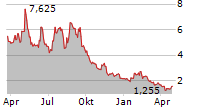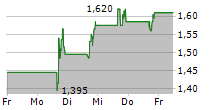
Results from Phase 1 dose escalation trial of BDTX-1535 in GBM patients demonstrated a favorable safety and tolerability profile, and encouraging anti-tumor activity and duration of treatment
Initial data from Phase 0/1 "trigger" ("window of opportunity") investigator-sponsored trial demonstrated BDTX-1535 achieved clinically meaningful drug levels in brain tumor tissue
CAMBRIDGE, Mass., June 01, 2024 (GLOBE NEWSWIRE) -- Black Diamond Therapeutics, Inc. (Nasdaq: BDTX), a clinical-stage oncology company developing MasterKey therapies that target families of oncogenic mutations in patients with cancer, today presented additional data from the Phase 1 dose escalation trial of BDTX-1535 in patients with recurrent glioblastoma (GBM), and initial data from a phase 0/1 "trigger" ("window of opportunity") investigator-sponsored trial at the American Society of Clinical Oncology (ASCO) Annual Meeting. Clinical data from these trials in patients with recurrent GBM demonstrated brain penetrance of BDTX-1535, as well as safety and tolerability data similar to what has been previously described for patients with non-small cell lung cancer (NSCLC). In addition, the Phase 1 trial demonstrated encouraging anti-tumor activity and duration of treatment for patients with previously treated GBM.
"The Phase 1 dose escalation results in patients with recurrent GBM show promising duration of treatment beyond two to four months typically expected in the recurrent setting, along with good safety and tolerability at therapeutic doses," said Patrick Wen, M.D., Director of The Center for Neuro-Oncology at Dana-Farber Cancer Institute. "Ultimately, the optimal point of intervention with an EGFR TKI may be upon initial diagnosis given the potential loss of EGFR as an oncogenic driver following chemotherapy and radiation."
In the poster titled "Phase 1 Study of BDTX-1535, an Oral 4th Generation Covalent EGFR Inhibitor, in Patients with Recurrent Glioblastoma: Dose Escalation Results," patients with EGFR alterations at initial diagnosis were enrolled upon recurrence. Patients received increasing doses of BDTX-1535 in 21-day cycles to assess safety/tolerability, pharmacokinetics (PK), pharmacodynamics (PD) and preliminary anti-tumor activity. As of the data cutoff date of January 20, 2024:
Safety/tolerability was consistent with BDTX-1535 clinical data in NSCLC previously presented in October 2023 at the AACR-NCI-EORTC International Conference on Molecular Targets and Cancer Therapeutics.
- Treatment-related adverse events (TRAEs) were primarily mild to moderate; the most common events included rash, diarrhea, stomatitis, paronychia, nausea, and fatigue.
- No grade 3 TRAEs were reported at doses of BDTX-1535 =100 mg/day, one grade 3 rash was observed at 200 mg, and no grade 4/5 TRAEs were observed.
Among 19 efficacy evaluable patients, several experienced stable disease with promising durability.
- One confirmed partial response was observed and eight patients experienced stable disease.
- Five patients remained on BDTX-1535 treatment for =4 months, 1 patient for =6 months, and 3 patients for =10 months.
- Longest duration of treatment was a patient who remained on therapy beyond 16 months.
- Longer duration of treatment with BDTX-1535 appeared to be associated with a shorter duration of prior treatment with temozolomide.
A second poster titled "A Phase 0/1 'Trigger' Trial of BDTX-1535 in Recurrent High-Grade Glioma (HGG) Patients with EGFR Alterations or Fusions," is an investigator-sponsored trial conducted at the Ivy Brain Tumor Center in Arizona. Patients with recurrent HGG with EGFR alterations and/or fusions at initial diagnosis were dosed with either 200mg BDTX-1535 daily for five days prior to brain tumor resection or 400mg administered three times per week prior to resection. A pre-specified PK threshold of 4.1nM unbound drug concentration was established, representing exposure that is 5-fold above the IC50 of BDTX-1535 for EGFR alterations and amplifications found in patients with GBM. Initial results from the trial demonstrated that BDTX-1535 exceeded the pre-specified threshold for drug concentration in the brain tumor tissue. In addition, both dosing regimens were generally well tolerated with expected EGFR-mediated side effects.
"We are very pleased with these initial results from our study showing that BDTX-1535 achieves levels in brain tumor tissue needed to observe a therapeutic effect," said Nader Sanai, M.D., Director of the Ivy Brain Tumor Center. "Clinical activity in these patients with further follow-up could support an additional trial of BDTX-1535 in newly diagnosed patients with confirmed EGFR mutations."
As of the data cutoff date of May 3, 2024, nine patients were evaluable:
BDTX-1535 generally well tolerated and achieved target drug concentration in tumor tissue.
- BDTX-1535 was generally well tolerated with no serious adverse events related to BDTX-1535.
- Eight of nine (88.9%) patients exceeded the PK threshold of 4.1nM unbound drug concentration, with average unbound drug concentration in Gadolinium (Gd) non-enhancing tumor tissue of 11.9 nM (for the 200mg dose) and 18.8nM (for the 400mg dose).
- BDTX-1535 was associated with suppression of EGFR-mediated signaling as determined by several pharmacodynamic markers.
- Patients achieving the PK threshold were enrolled in the post-resection component of the study with an update expected in the fourth quarter of 2024.
About BDTX-1535
BDTX-1535 is an oral, brain-penetrant MasterKey inhibitor of oncogenic epidermal growth factor receptor (EGFR) mutations in non-small cell lung cancer (NSCLC), including classical driver mutations, non-classical driver mutations, and the acquired resistance C797S mutation. BDTX-1535 is a fourth-generation tyrosine kinase inhibitor (TKI) that potently inhibits, based on preclinical data, more than 50 oncogenic EGFR mutations expressed across a diverse group of patients with NSCLC in multiple lines of therapy. Based on preclinical data, BDTX-1535 also inhibits EGFR extracellular domain mutations and alterations commonly expressed in glioblastoma (GBM) and avoids paradoxical activation observed with earlier generation reversible TKIs. A "window of opportunity" trial of BDTX-1535 in patients with GBM is ongoing (NCT06072586) and a Phase 2 trial is ongoing in patients with NSCLC (NCT05256290).
About Black Diamond Therapeutics
Black Diamond Therapeutics is a clinical-stage oncology company developing MasterKey therapies that target families of oncogenic mutations in patients with cancer. The Company's MasterKey therapies are designed to address a broad spectrum of genetically defined tumors, overcome resistance, minimize wild-type mediated toxicities, and be brain penetrant to treat CNS disease. The Company is advancing two clinical-stage programs: BDTX-1535, a brain-penetrant fourth-generation EGFR MasterKey inhibitor targeting EGFR mutant NSCLC and GBM, and BDTX-4933, a brain-penetrant RAF MasterKey inhibitor targeting KRAS, NRAS and BRAF alterations in solid tumors. For more information, please visit www.blackdiamondtherapeutics.com.
Forward-Looking Statements
Statements contained in this press release regarding matters that are not historical facts are "forward-looking statements" within the meaning of the Private Securities Litigation Reform Act of 1995. Because such statements are subject to risks and uncertainties, actual results may differ materially from those expressed or implied by such forward-looking statements. Such statements include, but are not limited to, statements regarding: the continued development and advancement of BDTX-1535, the expected timing for a clinical update on data from the "window of opportunity" clinical trial of BDTX-1535 in recurrent GBM patients, and the potential of BDTX-1535 to benefit patients with GBM in an earlier line of treatment. Any forward-looking statements in this statement are based on management's current expectations of future events and are subject to a number of risks and uncertainties that could cause actual results to differ materially and adversely from those set forth in or implied by such forward-looking statements. Risks that contribute to the uncertain nature of the forward-looking statements include those risks and uncertainties set forth in its Annual Report on Form 10-K for the year ended December 31, 2023, filed with the United States Securities and Exchange Commission and in its subsequent filings filed with the United States Securities and Exchange Commission. All forward-looking statements contained in this press release speak only as of the date on which they were made. The Company undertakes no obligation to update such statements to reflect events that occur or circumstances that exist after the date on which they were made.
Contacts
For Investors:
Mario Corso, Head of Investor Relations, Black Diamond Therapeutics
mcorso@bdtx.com
For Media:
media@bdtx.com




